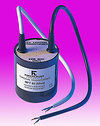Recently moved into a new house, and the kitchen lighting circuit keep tripping every few days. Normally happens when switching on or off the lights and you have to flick the fuse back.
There are 8 mr16 spot lights split between the utility room and downstairs toilet, 8 mr16 spot lights on a wire track in the kitchen and then 5 led gu10’s in the kitchen as well. All of them are connected to a separate switch.
One of the bulbs on the bulbs on the track wire is blown so could narrow down the fault?
Any thoughts would be appreciated.
There are 8 mr16 spot lights split between the utility room and downstairs toilet, 8 mr16 spot lights on a wire track in the kitchen and then 5 led gu10’s in the kitchen as well. All of them are connected to a separate switch.
One of the bulbs on the bulbs on the track wire is blown so could narrow down the fault?
Any thoughts would be appreciated.





